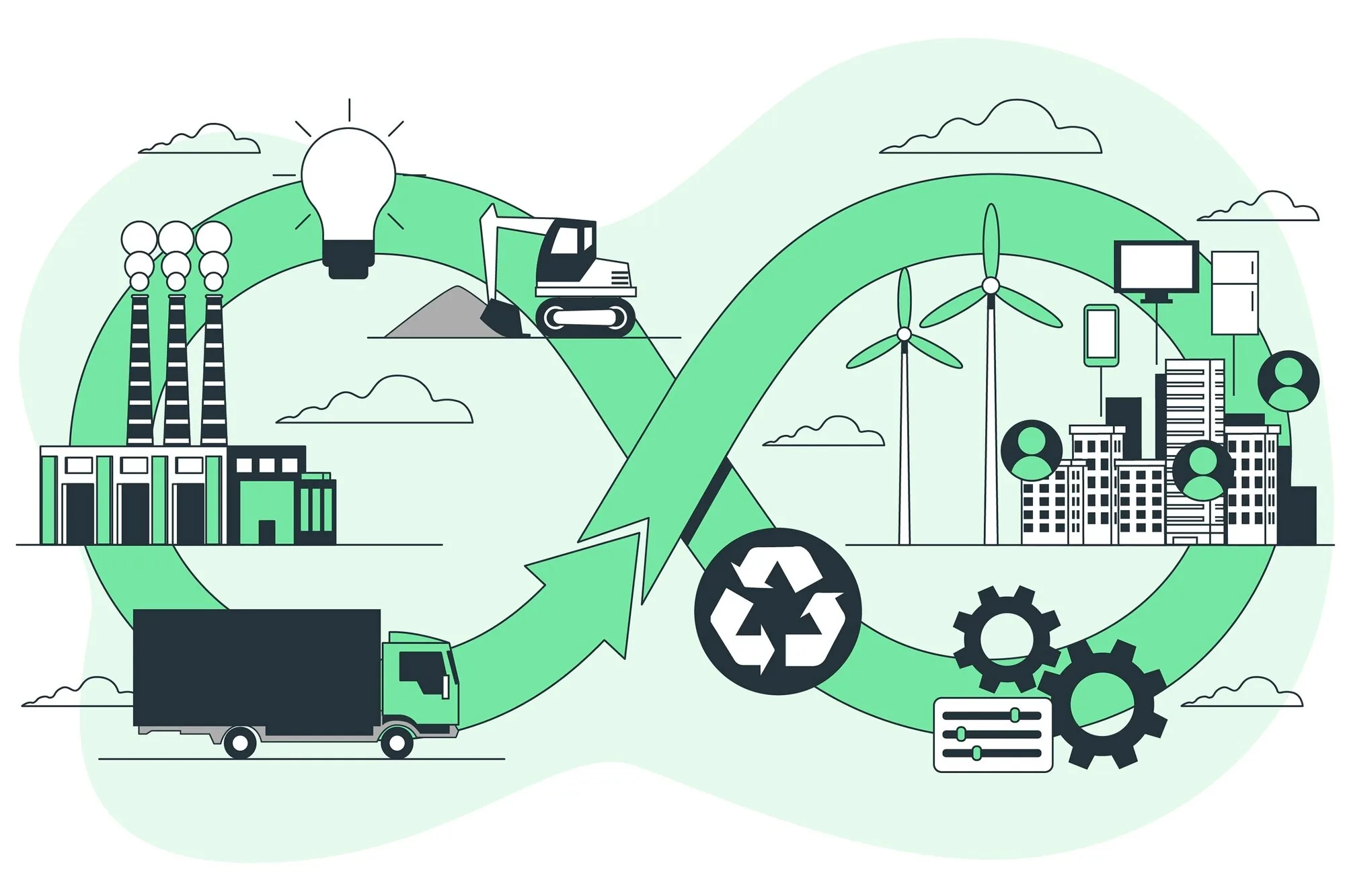
In an era where environmental challenges are becoming increasingly pressing, the concept of the circular economy is gaining significant attention. Traditional economic models, often described as “linear,” follow a “take-make-dispose” approach, which has led to resource depletion, pollution, and environmental degradation. In contrast, the circular economy aims to minimize waste and promote the continuous use of resources, offering a more sustainable alternative. This blog will explore the principles, benefits, challenges, and real-world applications of the circular economy, emphasizing its potential to create a more resilient and sustainable future for all.
The circular economy is an economic system designed to eliminate waste and promote the continual use of resources. It is based on three core principles:
The linear economy follows a straightforward “take-make-dispose” model, where resources are extracted, transformed into products, used, and then discarded as waste. This model is resource-intensive and environmentally harmful. In contrast, the circular economy aims to create closed-loop systems where waste is minimized, and resources are continuously reused. This shift not only conserves natural resources but also reduces pollution and greenhouse gas emissions.
The circular economy offers significant environmental benefits by reducing waste and pollution. By promoting practices such as recycling and upcycling, it minimizes the need for resource extraction, which is often energy-intensive and harmful to the environment. The World Resources Institute estimates that transitioning to a circular economy could cut global greenhouse gas emissions by 39 percent.
The circular economy also presents substantial economic opportunities. Businesses that adopt circular practices can reduce costs by minimizing waste and securing a more stable supply chain. Additionally, the International Labour Organization estimates that the circular economy could create a net increase of 24 million jobs by 2030. This shift can empower local communities by creating new employment opportunities in sectors such as recycling, repair, and remanufacturing.
The circular economy fosters social benefits by promoting community engagement and improving quality of life. Initiatives such as repair cafés and community sharing programs encourage local participation and strengthen community bonds. These practices also promote social equity by making refurbished products more accessible to budget-conscious consumers.
Encouraging the reuse and repair of products extends their life cycle and reduces the need for new production. This can be achieved through initiatives such as repair cafés, where community members can learn to fix their own items, or through product-as-a-service models that allow consumers to access products temporarily rather than owning them outright.
Remanufacturing involves disassembling products and reusing their components to create new products. Recycling, on the other hand, focuses on converting waste materials into new products. Both strategies are crucial for keeping materials in circulation and reducing the demand for virgin resources.
Product-as-a-service models allow consumers to access products temporarily, promoting resource sharing and reducing overconsumption. This can be seen in sectors such as furniture leasing, where companies offer temporary use of their products rather than selling them outright.
Technology and innovation play a vital role in the circular economy. Advances in materials science, for example, can lead to the development of more durable and recyclable products. Additionally, digital platforms can facilitate the sharing and reuse of products, making it easier for consumers to participate in circular practices.
Government policies and regulations are essential for supporting the transition to a circular economy. Initiatives such as the European Union’s Circular Economy Action Plan focus on sustainable product design and waste reduction. Similarly, New Zealand’s Circular Economy Action Plan aims to foster sustainable growth by promoting circular practices. These policies provide a framework for businesses and individuals to adopt more sustainable practices.
Transitioning to a circular economy is not without its challenges. One of the main obstacles is the need for significant changes in production and consumption patterns. This requires investment in new technologies and infrastructure, as well as changes in consumer behavior. Additionally, the circular economy often requires collaboration across different sectors, which can be complex to coordinate.
To overcome these challenges, a multi-faceted approach is needed. Education and awareness campaigns can help consumers understand the benefits of circular practices and encourage them to make more sustainable choices. Governments can also provide incentives for businesses to adopt circular practices, such as tax breaks or grants. Finally, collaboration between businesses, policymakers, and consumers is crucial for driving systemic change.
The circular economy offers a sustainable alternative to the traditional linear model, with significant environmental, economic, and social benefits. By adopting circular practices such as reuse, repair, remanufacturing, and recycling, we can create a more resilient and sustainable future. While there are challenges to overcome, the potential benefits make the transition to a circular economy a necessary and worthwhile endeavor. As individuals, businesses, and governments, we all have a role to play in driving this transformation and ensuring a sustainable future for generations to come.